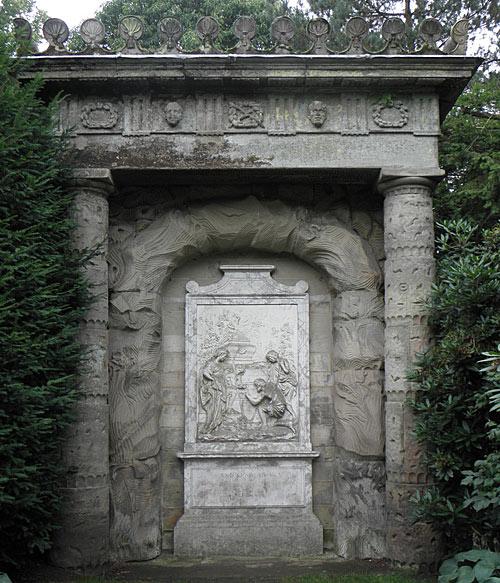
According
to legends, It is written that in 1684 many young girls who lived in
the area met the devil in their dreams. After seducing them, he sent
them to visit the monks at Lucedio's Abbey. The girls managed to corrupt
the abbey and convert the monks to Satanism. From that moment on, a
long history of evil rituals, tortures, homicides, cruelty and even
cases of child molestation began. Things were so twisted that the abuse
reached Rome and Pope Pio VI closed the Abbey. That was on September 10,
1784 - one hundred years later.
Lucedio Abbey is a haunted monastery in Italy that was featured
on Scariest Places on Earth and Ghost Hunters International. It is a
place where torture, murder and disturbing black magic rituals were
performed and many say it is one of Italy's most haunted places. Lucedio
Abbey dates back to 1123. During that time, Cistercian monks resided
there and introduced rice cultivation to the area. What nobody suspected
was that these monks had lost faith in God and turned their backs on
Christianity. The evil monks took to worshipping the devil and performed
horrific and disturbing black magic rituals within the walls of the
holy building.
The Ghosts of LUCEDIO ABBEY : Unexplained Encounters
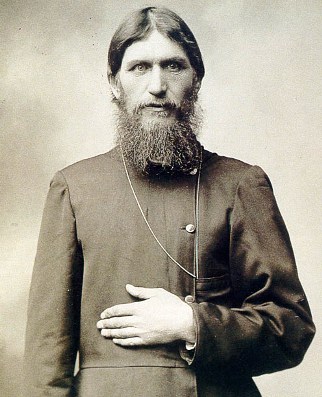
According
to legends, Russian mystic Grigori Rasputin (1869-1916) was first
poisoned with enough cyanide to kill ten men, but he wasn’t affected. So
his killers shot him in the back with a revolver. Rasputin fell but
later revived. So, he was shot again three more times, but Rasputin
still lived. He was then clubbed, and for good measure thrown into the
icy Neva River.
The mysterious Grigory Efimovich Rasputin, a peasant who claimed powers
of healing and prediction, had the ear of Russian Tsarina Aleksandra.
The aristocracy could not stand a peasant in such a high position.
Peasants could not stand the rumors that the tsarina was sleeping with
such a scoundrel. Rasputin was seen as "the dark force" that was ruining
Mother Russia.
To save the monarchy, several members of the aristocracy attempted to
murder the holy man. On the night of December 16-17, 1916, they tried to
kill Rasputin. The plan was simple. Yet on that fateful night, the
conspirators found that Rasputin would be very difficult to kill.
The Mad Monk
Tsar Nicholas II and Tsarina Aleksandra (the emperor and empress of
Russia) had tried for years to give birth to an heir. After four girls
were born, the royal couple was desperate. They called in many mystics
and holy men. Finally, in 1904, Aleksandra gave birth to a baby boy,
Aleksei Nikolayevich. Unfortunately, the boy who had been the answer to
their prayers was afflicted with "the Royal disease," hemophilia. Every
time Aleksei began to bleed, it would not stop. The royal couple became
frantic to find a cure for their son. Again, mystics, holy men and
healers were brought in. Nothing helped until 1908, when Rasputin was
called upon to come aid the young tsarevich during one of his bleeding
episodes.
Rasputin the Mad Monk - The Immortal Russian

The haunted japanese doll Okiku, possessed by the spirit of a 10 year old girl who took refuge inside it. Some time after the funeral
of the girl, the hair of the doll began to grow. Although the doll’s
hair is cut regularly, the hair grows again and again. A mysterious doll
possessed by the spirit of a child has captured the curiosity of people
across Japan for decades. The legendary Okiku doll, named after the
girl who long ago used to play with it, is a 40-centimeter (16-in) tall
kimono-clad figure with beady black eyes -- and hair that grows.
The Okiku doll has resided at the Mannenji temple in the town of
Iwamizawa (Hokkaido prefecture) since 1938. According to the temple, the
traditional doll initially had
short cropped hair, but over time it has grown to about 25 centimeters
(10 in) long, down to the doll's knees. Although the hair is
periodically trimmed, it reportedly keeps growing back.
It is said that the doll was originally purchased in 1918 by a 17-year-old boy named Eikichi Suzuki while visiting
Sapporo for a marine exhibition. He bought the doll on Tanuki-koji --
Sapporo's famous shopping street -- as a souvenir for his 2-year-old
sister, Okiku. The young girl loved the doll and played with it every
day, but the following year, she died suddenly of a cold. The family
placed the doll in the household altar and prayed to it every day in
memory of Okiku.
Some time later, they noticed the hair had started to grow. This was
seen as a sign that the girl's restless spirit had taken refuge in the
doll.
This doll was originally purchased in 1918 by a Eikichi Suzuki in Sapporo, where he saw a beautiful Japanese doll
with a Kimono. Eikichi bought this doll for her sister, who is two
years old named Okiku. She loved this doll and play it every day. But
unfortunately, Okiku died shortly afterwards of a fever. Then at his funeral,
family want to put a doll into his coffin, but somehow they forgot. The
girl’s family then put the doll on the household altar and pray for
every day in order to commemorate Okiku.
Some time later, they saw the hair began grows. According to this story
is the spirit of the girl who took refuge inside the doll.
Okiku - Ghost Story of Japanese Haunted Devil Doll
In
Staffordshire, England, there is a sculpture that has invited the wits
and intellect of many intellectuals in an attempt to decode an inscription reading DOUOSVAVVM. Although the Shepherd’s Monument was constructed back in the 18th century, the letters found therein were never solved, even 250 years after it was completed. The Shugborough inscription is a sequence of letters - O U O S V A V V, between the letters D M - carved on the 18th-century Shepherd's Monument in the grounds of Shugborough Hall in Staffordshire, England, below a mirror image of Nicolas Poussin's painting,
the Shepherds of Arcadia. It has never been satisfactorily explained,
and has been called one of the world's top uncracked ciphertexts. The
inscription became widely known after being mentioned in the 1982 book
The Holy Blood and the Holy Grail by Michael Baigent, Richard Leigh, and
Henry Lincoln.

The monument was built sometime between 1748 and 1763, commissioned by
Thomas Anson, paid for by his brother, Admiral George Anson, and
fashioned by the Flemish sculptor Peter Scheemakers. The relief copy of
the Poussin painting is contained within a rustic arch, and shows
a woman and three shepherds, two of whom are pointing to a tomb. On the
tomb is carved the Latin text Et in arcadia ego ("I am also in Arcadia"
or "I am, even in Arcadia"). The carving displays a number of small
alterations from the original painting, and an extra sarcophagus has been placed on top of the main tomb. Above the Poussin scene are two stone heads, one showing a smiling bald-headed man, the other bearing a likeness to the goat-horned Greek god Pan.
Shugborough Inscription - Shepherd’s Monument Inscription
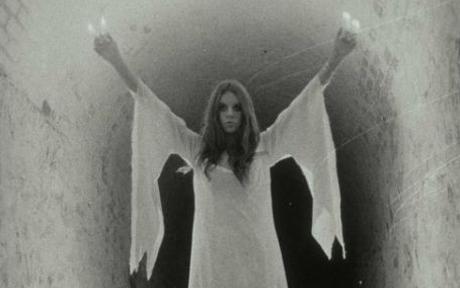
In
popular medieval legend, a White Lady is fabled to appear by day as
well as by night in a house in which a family member is soon to die.
According to The Nuttall Encyclopaedia, these spirits were regarded as
the ghosts of deceased ancestresses.
Castle Huntly, Scotland, is said to be haunted by a young woman dressed
in flowing white robes. There are various stories concerning her
history, one of which is that she was a daughter of the Lyon family who
occupied the castle in the 17th century. When her affair with a
manservant was discovered she was banished to a tower on the
battlements. Unable to endure her suffering, she threw herself to her
death from the tower. The ghost of the White Lady has been seen a number
of times over the years, often on the grounds surrounding the castle.
She has also been seen in the room in which she was imprisoned.
Darwen is reportedly haunted by a ghost. In Darwen's old cemetery there is a gravestone of a supposed white lady,
whose eyes open when they are touched. There have been reported
sightings of her ghost walking around the area at night, seeking her
child. The white lady of Darwen is said to have died during childbirth,
or to have been raped and murdered by a group of men who stole her
child. She is said to manifest in response to the spoken phrase "White
lady, white lady, I stole your black baby", before attacking the speaker
and causing them to faint. Local folklore says that the white lady of
Darwen killed a group of teenagers who were on a camping trip in the
White Hall Park in the late 1980s, within two hours of them visiting her
grave.
The White Lady of Willow Park is native to a small,
heavily-wooded park of Newton-le-Willows, Merseyside, in northwest
England. She is thought to be the tormented spirit of a bride who was
drowned in the lake by her husband on their wedding night. Variations on
her method of death include being bricked up in a cave and hanging
herself in the kitchen.
Urban Legends of White Lady Ghost
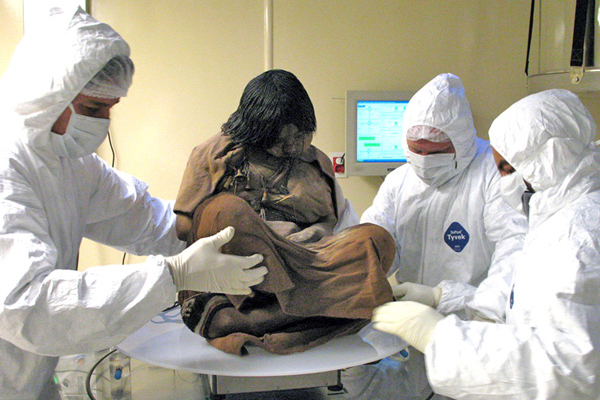
Initially
this might look to you like any normal girl being treated by a
doctor,the girl in the photo is not any normal living girl but the mummy of a 15 year old child who has been dead for about 500 years.
She was found in 1999 near Llullaillaco's 6739 meter summit. An
Argentine-Peruvian expedition found the perfectly preserved body and she
was nicknamed "La doncella" which means “The maiden”. According
to the Inca she was chosen to go and live with the gods. But in reality
she was a sacrifice to the Inca Gods and had been brutally killed in the
name of religion.
Scientists say that her organs are intact and its as if she had died
just a few weeks ago. From testing the samples of her hair they could
determine the type of diet she was on before her death. This lead to the
discovery that the Incan fattened their children before killing them.
Months or even years before the sacrifice pilgrimage these children were
given diets which were those of the elite, consisting of maize and
animal proteins.
Judging from the condition of the body, it is believed that she was
drugged and left to die in the mountains. It would not have taken much
time for her to die due to the high exposure. The Incan high priests
took their victims to high mountaintops for sacrifice. As the journey
was extremely long and arduous, especially so for the younger victims,
coca leaves were fed to them to aid them in their breathing so as to
allow them to reach the burial site alive. Upon reaching the burial
site, the children were given an intoxicating drink to minimize pain,
fear, and resistance, then killed them either by strangulation, a blow
to their head or by leaving them to lose consciousness in the extreme
cold and die of exposure.
Mummy Juanita - Inca Girl Frozen For 500 Years

The
game was played as night fell upon the region using three separate
rooms. In preparation, participants would light 100 andon in the third
room and position a single mirror on the surface of a small table. When
the sky was at its darkest, guests gathered in the first of the three
rooms, taking turns orating tales of ghoulish encounters and reciting
folkloric tales passed on by villagers who claimed to have experienced
supernatural encounters. These tales soon became known as kaidan. Upon
the end of each kaidan, the story-teller would enter the third room and
extinguished one andon, look in the mirror and make their way back to
the first room. With each passing tale, the room slowly grew darker and
darker as the participants reached the one hundredth tale, creating a
safe haven for the evocation of spirits.
However, as the game reached the ninety-ninth tale, many participants
would stop, fearful of invoking the spirits they had been summoning.
While the exact origins of Hyakumonogatari Kaidankai are unknown, it was
believed that it was first played amongst the samurai class as a test
of courage. In Ogita Ansei's 1660 nursery tale "Otogi Monogatari" a
version of the game was described in which the narrative tells of
several young samurai telling tales in the Hyakumonogatari Kaidankai
fashion. In the tale, as one samurai finished the one hundredth tale, he
began to extinguish the candle when suddenly he sees a giant gnarled
hand descend upon him from above. While some of the samurai cowered in
fear, a swipe of his sword revealed the hand to be merely the shadow of a
spider.
At first, the game of Hyakumonogatari Kaidankai was popular amongst the
aristocratic warrior class, but it soon garnered favorable reputation
amongst the working class peasants and town people. With a heightened
interest in telling newer and original kaidan, people began scouring the
countryside for tales of the mysterious, many of which combined a
mixture of ghostly vengeance and elements of karma in Buddhism.
Japanese culture and heritage are rich with spirituality and
superstition. In Japan, you should "cleanse" yourself after going to a
funeral by throwing salt over your body. Cutting your fingernails in the
evening is bad luck, and so is using or referring to the number four
(homonym for death) or nine (homonym for suffering). However, few
practices are quite as fascinating as the 100 ghost stories game. This
was a popular parlor game called Hyakumonogatari Kaidankai, from the Edo
period (1603 - 1868). It worked as follows:
Urban Legend of 100 Candles Game - Hyakumonogatari Kaidankai

The
Bloody Benders were a family of serial killers who owned an inn and
small general store in Labette County of southeastern Kansas from 1871
to 1873. The family consisted of John Bender, his wife Mrs. Bender
(later referred to as Kate, Sr., since no one knew her given name), son
John, Jr., and daughter Kate. While Bender mythology holds that John and
Kate were brother and sister, contemporary newspapers reported that
several of the Benders' neighbors have stated that they claimed to be
married, possibly a common law marriage.
They are believed to have killed about a dozen travelers before their
crimes were discovered and the family fled, with their fate uncertain.
Much folklore and legend surrounds the Benders, making it difficult to
separate fact from fiction.
Background
Following the American Civil War, the United States government moved the
Osage Indians from Labette County, Kansas to a new Indian Territory
located in what would eventually be Oklahoma. The newly-vacant land was
then made available to homesteaders. In October 1870, five families of
spiritualists settled in and around Osage township of western Labette
County, approximately 7 mi (11 km) northeast of where Cherryvale would
be established seven months later. One of the families was John Bender
Sr. and John Bender Jr. who registered 160 acres (65 ha) of land located
adjacent the Great Osage Trail, which was then the only open road for
traveling further west. After building a cabin, a barn with corral and a
well, in the fall of 1871, Kate (Ma) Bender and her daughter Kate
arrived and the cabin was divided into two rooms by a canvas
wagon-cover. The Benders used the smaller room at the rear for living
quarters, while the front room was converted into a "general store"
where a few dry goods were sold. The front section also contained their
kitchen and dining table, where travelers could stop for a meal or even
spend the night. Ma and Kate Bender also planted a 2 acres (0.81 ha)
vegetable garden and apple tree orchard north of the cabin.
Bender family
John (Pa) Bender Sr. was around sixty years old and spoke very little
English. When he did speak it, it was so guttural that it was usually
unintelligible. Ma Bender, who also allegedly spoke very little English,
was 55 years of age and was so unfriendly that her neighbors took to
calling her a "she-devil". John Bender Jr. was around 25 years old,
handsome with auburn hair and mustache and spoke English fluently, but
with a German accent. John was prone to laughing aimlessly, which led
many to consider him a "half-wit". Kate Bender, who was around 23, was
cultivated and attractive and she spoke English well with very little
accent. A self-proclaimed healer and psychic, she distributed flyers
advertising her supernatural powers and her ability to cure illnesses.
She also conducted séances and gave lectures on spiritualism, for which
she gained notoriety for advocating free love. Kate's popularity became a
large attraction for the Benders' inn. Although the elder Benders kept
to themselves, Kate and her brother regularly attended Sunday school in
nearby Harmony Grove. The Benders' inn was a simple one room house
divided into living quarters and the kitchen and store area.
The Bloody Benders: Horror in the Old West
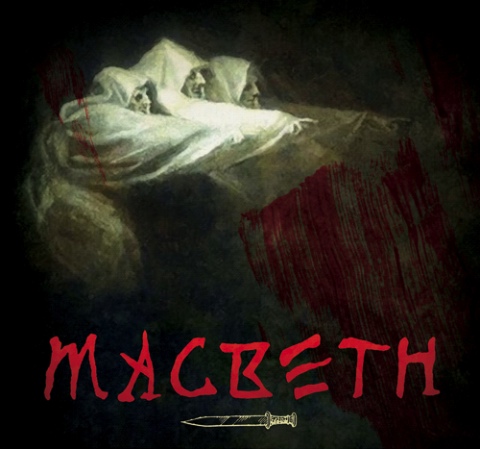
The
Scottish Play and the The Bard's Play are euphemisms for William
Shakespeare's Macbeth. The first is a reference to the play's Scottish
setting, the second a reference to Shakespeare's popular nickname.
According to a theatrical superstition, called the Scottish curse,
speaking the name Macbeth inside a theatre will cause disaster. A
variation of the superstition forbids direct quotation of the play
(except during rehearsals) while inside a theater.
Because of this superstition, the lead character is most often referred
to as the Scottish King or Scottish Lord. Sometimes Mackers is used to
avoid saying the name, mostly in North America.
As success or failure in the theater can be influenced by so many
intangible and unpredictable factors, it's not surprising that actors
and other theater types maintain a variety of long-standing
superstitions, which often are taken very seriously. (The most famous is
the insistence on saying "break a leg" rather than "good luck.")
Two such superstitions float around Macbeth. The first is that it's bad
luck to even say “Macbeth” except during rehearsal or performance. When
referring to the work one instead uses circumlocutions, such as “the
Scottish play” or “Mackers” or “the Scottish business” or “the Glamis
comedy” or just “that play." Some say this rule applies only when inside
a theater; it’s OK, therefore, to use the dread name in other settings –
like classrooms, for instance.
The remedy, if someone does happen to utter the unutterable, is to leave
the room, close the door, turn around three times, say a dirty word (or
spit, some say), then knock on the door and ask to be let back in. If
you can’t do all that, you simply quote from Hamlet, act 1, scene 4:
“Angels and ministers of grace defend us!”
The second superstition is that the play itself brings ill luck to cast
and crew, and many productions of Macbeth have, in fact, encountered
unfortunate circumstances. The supposed origin story for this is that
Shakespeare used “authentic” witches’ chants in the play; as punishment,
real witches cast a curse on the play, condemning it for all time.
The Curse of Macbeth
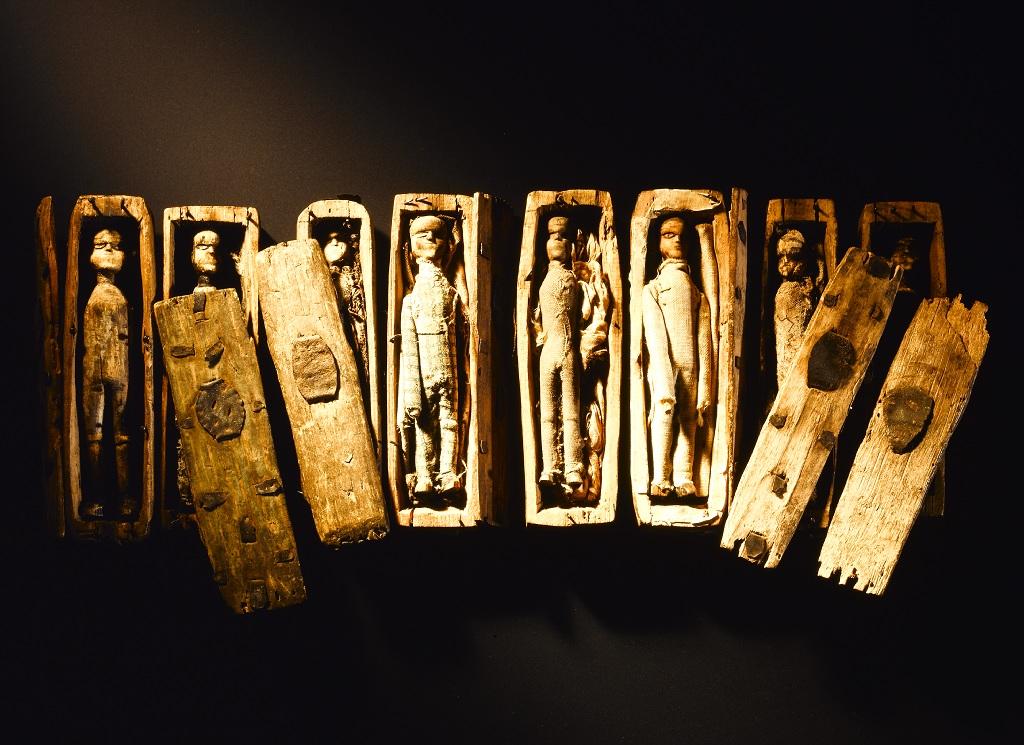
Set in Scotland's magnificent capital, Edinburgh, Murder dolls
is a tale of serial killers, Bodysnatchers and grisly science. The
story begins on a misty morning in 1836 with the discovery of 17
miniature wooden coffins. Inside each one, is an eerie, dressed doll.
The discovery of the dolls has led to some interesting theories –
everything from the work of a madman to tales of witchcraft. But some
believe that Edinburgh's miniature coffins may be connected to
Scotland's most notorious serial killers –Burke and Hare - two Irish
laborers who murdered seventeen victims in the 1800's. But how are the
dolls connected to the 17 murder victims – and who made them?
Burke and Hare are notorious even today, but in the time of
Ghosts of Albion their crimes are a matter of relatively recent memory.
Their murder spree, known as the West Port murders, began in Edinburgh
from late 1827 and continued for most of 1828. Their victims were
drugged and suffocated to keep them intact; the bodies were sold to a Dr
Robert Knox for dissection. In the end, a neighbour discovered the
body of their last victim and alerted the police. However, the evidence
of murder wasn't actually that good, and Hare was offered immunity if
he confessed and testified against Burke. Burke made his own confession
- in which he claimed that Dr Knox knew nothing of the origin of the
bodies they sold him - but was sentenced to death and hanged in January
1829.
Less well known is that Burke's lover (Helen M'Dougal) and Hare's wife
(Margaret, née Laird) were also implicated, though they were released
for lack of proof - both narrowly escaped death from an outraged public -
M'Dougal is thought to have left the country, while Margaret Hare's
dropped off the map. William Hare also dropped off the map, though
popular folklore invented a variety of painful ends for him. Despite
Burke's claim that Dr Knox was not involved, the scandal destroyed his
reputation in Edinburgh, and he went to London, and died in 1862.
At first theories on the dolls significance ranged from witchcraft
to child’s toys, but eventually it began to seem that the 17 tiny
figures could be effigies for the 17 murder victims a decade earlier.
Between 1827-1828 William Burke and William Hare lured in and murdered
their lodgers in a scheme to provide fresh bodies to the local anatomy
school. Dr. Robert Knox, a brilliant and well known local anatomy
lecturer purchased the bodies, and most likely knew that something was a
bit suspicious about his supply chain.
Mystery of Burke & Hare Murderdolls
One
of the most storied sites in all of southern New Jersey is a mysterious
body of water known as the Blue Hole. Located deep in the Pine Barrens
of Winslow, on the border of Camden and Gloucester Counties, this small
but legendary pool is said to not only be bottomless, but also a
frequent pit stop of the Jersey Devil.
A number of legends exist: that it is bottomless with powerful currents,
that the water is freezing cold year-round, and that the Jersey Devil
is active in the area.
New Jersey has probably spawned the most well known cryptozological,
paranormal oddity of the century, the Jersey Devil. The Beast, a
creature not scientifically proven to exist, has terrorized the
population of New Jersey for over 270 years. But in the back woods ,
hiding in the remote crevices of the Pine Barrens, there awaits a less
well known but equally mysterious legend, the Blue Hole.
Located deep in the Pine Barrens of Winslow Township, NJ, lies a
circular, perfectly crystal clear body of water(weird, as all sources of
water in the Pine Barrens are tea colored). This small but legendary
pool is not only said to be bottomless but a frequent pit stop of the
Jersey Devil, his personal portal to Hell, they say. Still as glass, the
water looks inviting, especially on a hot summer day. Yet locals warn
their children to stay away and whatever they do, don't swim in it.
Tales of unexplained whirpools and mysterious drownings have long been
part of the pools lore. For those who were lucky enough to get away have
claimed they felt an icy hand pulling them down into the chilly depths.
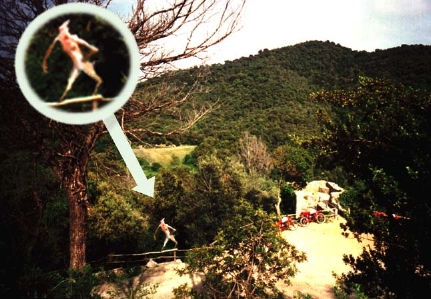
After people became afraid of it, the blue hole was largely abandoned.
Perhaps farmers and families in the area warned children against going
to the Blue Hole because the Jersey Devil lived there, and it would hurt
or steal them. Locals still go to the area and use it as a party spot.
There are many other 'blue holes' in the immediate vicinity, as well as
quicksand and other seasonal ponds and lakes that form from springs
seeping from high water table levels. What can not be so easily
explained is the color of the lake compared to other brackish waters in
the vicinit
The Devils Puddle - Legend Of The Blue Hole
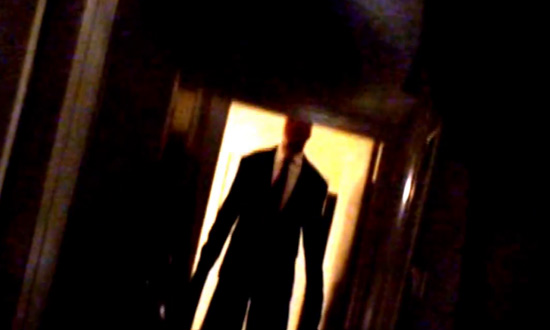
There are legends and
myths that have been around for centuries and have seared themselves
into our minds and culture. Then there are those that have been brought
to life by way of modern technologies reminding us of nightmares that
should have been buried and forgotten. One such legend is known through
internet popularity as Slender man.
The creature known as Slender man is said to have the appearance of a
tall, lanky man in a black suit. Not so scary, right? Just wait.
He towers at six to seven feet with unusually thin limbs. His face, if
you can call it that, is featureless and white, though some say that it
can morph into whatever you fear the most. His arms, however, can
stretch out to grab his victims and bend in unnatural ways with long,
talon-like fingers used to scratch at the windows of children. Yes
that’s right. While he haunts everyone who has the misfortune to see
him, he prefers to devour those that are 16 and younger. He is also said
to have multiple arms sometimes seen as long tentacles used to ensnare
whomever catches his eye, or should I say, the void where his face
should be.
Slender man is a silent stalker that likes to hide in plain sight and is
usually spotted in wooded areas where he could blend in amongst the
trees and dark corners of the forest. When he finds his victim of
choice, he follows them home and upon being seen through the window, can
use a form of hypnosis that compels you to walk right into his spindly
arms. Usually glimpsed at a distance, once he’s close enough to get a
good look at, that’s when he slinks into your home appearing in dark
hallways or blank t.v. screens.
American legend says that he was once a man who was tortured viciously,
first being beaten with a log, then impaled with a 2 foot stick and hung
from a tree with his arms and legs pulled from their sockets.
When captured, you will wake to find Slender man standing above you. He
will ask one question and if you’re lucky and get it right, he breaks
both your arms and legs. But if you are wrong, then he slowly sticks his
fingers down your throat pulling out the heart. In circles on the
internet Slender man is claimed to be the creation of a website called
Somethingawful.com. Many say that this alone debunks the mysterious
legend and closes the case on the creature’s fictitious existence. Well,
not quite.
It appears that the Slender man myth goes back a lot farther than is
claimed. He is based on something called Der Grossman, meaning “tall
man”, which is the Germanic version. Legend says that children would
site him in the Black Forest days before their disappearance. All that
was left behind would be the mutilated remains of livestock and in a few
cases, village inhabitants would be found several miles from their
homes impaled on the higher branches of the trees.
The Real Life Legend of Slender Man

The Hellfire Club
was a name for several exclusive clubs for high society rakes
established in Britain and Ireland in the 18th century, and was more
formally or cautiously known as the Order of the Friars of St. Francis
of Wycombe. These clubs were rumoured to be the meeting places of
"persons of quality" who wished to take part in immoral acts, and the
members were often very involved in politics. Neither the activities nor
membership of the club are easy to ascertain. The club motto was Fais
ce que tu voudras (Do what thou wilt), a philosophy of life associated with François Rabelais' fictional abbey at Thélème and later used by Aleister Crowley.
Throughout history, secret societies have captured the public's
attention. They have been the basis for many conspiracy theories mainly
based on their tight secrecy. The question still remains today if they
really were secret societies set to overtake the world or if they were
just bored people who wanted to give the world something to talk about.
One of those secret societies was the Hell Fire Club in England.
There has been much speculation about the layout and the design of the
Hellfire Caves. Map of the Hellfire Caves with female reproductive
system showing the perfect match of the Ovary, Womb, Pubis, Shaft and
Testicles. Just a coincidence?
The purpose of this club was to enliven the "dull traditional Sunday"
with drinks and rude songs. According to a contemporary satire "Religion
is their scorn, foul vice their Pride, The Clergy is their Subject to
deride". It is generally assumed that during these rakes' meeting
parodies of religious rites were carried out, though these were probably
more akin to Blackadder's and Melchett's drinking nights than to the
generally imagined Satanic ritual.
The Hell Fire Club was established in the early 1700s by Sir Francis
Dashwood. It began as a mockery of religion but became something much
more. Dashwood was always at odds with religion and was not quiet about
his feelings in that regard. He took many opportunities to mock
religion, especially Catholicism. This included the establishment of The
Friars of St. Francis of Weycomb (some called it Medmenham which was
the name of the abbey the group made its home in) as the Hell Fire Club
was originally known as. According to Daniel Pratt Mannix, "The original
Hell-Fire Club had been abolished by special order of the Lord
High Chancellor, because even in that broadminded time the members had
carried things a little too far when they celebrated Mass on the body of
a naked girl stretched out on one of the barroom tables." Dashwood
recreated the group under the new name but the public kept calling the
group The Hell Fire Club.
Hell Fire Club Secret Society - Sex, Satanism and Secret Societies
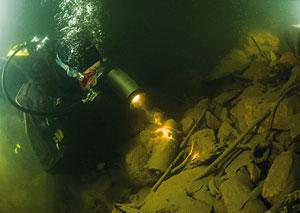
In
a dense mountain forest high up in the Austrian Alps, 60 miles from
Salzburg, the mysterious Lake Toplitz lies isolated. It is surrounded by
cliffs and forests in the picturesque Salzkammergut lake district
within the Totes Gebirge, or dead mountains. Luftwaffe
Commander-in-Chief Hermann Goering had a villa not far from the lake. He
would sit in the local bar with Adolf Hitler himself, communing
contentedly with the villagers.
This region was intended to be the Alpenfestung, the Reich's Alpine
Fortress and last redoubt, but by April 1945, Hitler was dead, the
Allies were closing in, and the Reich found itself out of time. Allied
artillery echoed in the mountains. Many of the last leaders of the Nazi
regime fled here - some to make a last stand, others to try to preserve
some shred of the Reich in hope of a future rebirth. Among the artifacts
hidden here is rumored to be a horde of Nazi gold.
Supposedly, the Nazis stashed vast quantities of gold and other
priceless plunder, including the lost panels from Russia’s Amber
Chamber, as well as documents detailing the whereabouts of other Third
Reich caches. These rumors have lured treasure hunters into its depths,
some to their death.
Local villagers hired by the German army to transport heavy loads to the
lake shore helped fuel rumors of sunken treasure. "Based on what they
testified, something was definitely submerged in the lake — whether it’s
a treasure remains to be seen," said Albrecht Syen, landlord of the
local Fischer Hut and custodian of memorabilia from past dives. "There’s
official documentation of a large delivery taken to the lake, but
nobody knows what happened to it."
Ida
Weisenbacher was a 21-year-old farm girl when Nazi soldiers arrived at
her door on February 23, 1945. "It was five o'clock in the morning, we
were still in bed when we heard the knock on the door," claims
Weisenbacher. "'Get up immediately. Hitch up the horse wagon, we need
you.'" The soldiers needed the wagon because their truck had reached the
end of the road and only horses could venture further to the lake's
shore. "A commander was there. He told us to bring these boxes as fast
as possible to Lake Toplitz," says Weisenbacher.
According to Weisenbacher, each box was labeled with bold letters and a
number. Three wagonloads were taken to Lake Toplitz. "When I brought the
last load, I saw how they went on to the lake and dropped the boxes
into the water.... The S.S. kept shoving me away but I saw the boxes
were sunk into the lake."
The Lost Treasure of Treacherous Lake Toplitz

A few weeks before the Pearl Harbor attack,
a pair of strange ads appeared in the New Yorker. They seemed to be
advertising a dice game called The Deadly Double. One of the ads showed a
pair of dice with the characters 0, 5, 7, xx, 24, and 12 on the visible
faces. Above were warnings in a variety of languages: "Achtung!
Warning! Alerte!" The other ad showed people in a bunker and explained
that the dice game was essential air raid survival gear. The company
logo was a suspiciously Germanic looking double eagle.
The ads have a somewhat strange design, but only in retrospect did they
appear to contain a coded message. The numbers could allude to the date
of the Pearl Harbor attack (12/7), with the other numbers representing
codes to be deciphered by sleeper agents in the U.S. The Deadly Double itself was thought to refer to the twin threats of Germany and Japan.
Like many mysteries, retellings of this story emphasize the unknown and
leave out crucial facts. The 0 and 5 are sometimes thought to foretell
the exact time of the attack, but the first aircraft opened fire on
Pearl Harbor at 7:48 a.m. local time. Books on mysterious events like to
leave this story unresolved, as though the identity of the ads' creator
remains unknown to this day. In truth, it was traced to a game company
in Chicago that made a dice game called the Deadly Double. Their war-themed ad might seem like poor taste today, but the numbers on the dice matching the date of Pearl harbor was pure coincidence. Still, it was weird enough that the FBI got involved.
No
sooner had the Japanese bombed Pearl Harbor, Hawaii on December 7,
1941, that the home front became obsessed that lurking in the shadows
was a Japanese traitor or Nazi spy, saboteur, or subversive hiding
behind every bush, gathering all of the United States’ valuable
information.
As a result of the attack on Pearl Harbor, the nation was on high alert for spies, especially “suspicious looking Orientals.”
Many law enforcement officials took matters into their own hands. At a
major naval base in Norfolk, Virginia, the chief of police located all
Japanese aliens living in his city and ordered them jailed – all
fourteen of them. In Newark, New Jersey, police officers’ were given
the authority to board trains and arrest all suspicious looking
Orientals and to use their own judgement when determining if an
individual of Oriental origin “looked suspicious” or not. Other state’s
followed, singling out many individuals as “suspicious looking
Orientals.”
Creepy Coincidence of the Deadly Double - Pearl Harbor advance-knowledge Conspiracy Theory
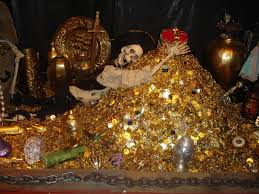
The year was 1859. Four unsavory characters were serving as mercenaries
for the Peruvian Army. A Spaniard (Diego Alvarez), an Irishman
(Killorain), an Englishman (Luke Barrett) and an American (Brown). They
figured there had to be a way to make better money and were looking for
opportunities.
One of the men ran into a renegade priest named Father Matteo. The
priest told the man of a treasure hidden and guarded at a church in the
town of Pisco. The four came up with a plan, deserted from the army and
made their way to Pisco.
Alvarez and Killorain were both Catholic and started to attend mass
regularly. They became model parishioners. After some time they went to
the local priests with a terrible story. They had found out that a
renegade priest by the name of Father Matteo knew about the treasure and
was gathering up a large group of bandits to come and steal the
treasure.
The Priests believed the story. These men could know nothing of the
treasure on their own. Father Matteo must be up to something. Alvarez
came up with a plan to save the treasure. They could load the treasure
onto a ship and move it to the safety of Callao. Alvarez and his three
friends would gladly donate their services as guards.
So it came to pass that the priests loaded the following on a ship in the tiny harbor of Pisco:
- 14 tons gold ingots
- 7 great golden candlesticks, studded with jewels
- 38 long diamond necklaces
- A quantity of jeweled rings
- A quantity of jeweled bracelets
- A quantity of jeweled crucifixes
- 1 chest uncut stones
- 1 chest Spanish doubloons
- Various other jewels and ornaments
Hidden Treasures - Treasure Chest of the Church of Pisco

The
Isdal woman (Norwegian: Isdalskvinnen) is the subject of an unsolved
case involving an unidentified woman found dead at Isdalen Valley in
Bergen, Norway on 29 November 1970. Considered one of Norway's most
profound mysteries, the case has been the subject of intense speculation
over the years regarding the identity of the victim, the events leading
up to her death and the cause of death. Public interest in the case
remains significant.
The woman was found in a part of Isdalen popularly known as "Death
Valley", which lies in the direction towards Mount Ulriken. Next to the
scene police found a burned-out passport. The autopsy showed that the
woman had suffered blunt force trauma to the neck and had taken several
sleeping pills before she died. The official police report concluded
suicide, but this conclusion is highly controversial.
Discovery
On 29 November 1970 at approximately 13:15, while hiking in the hills of
Isdalen valley outside of Bergen, a university professor and his two
young daughters came across the partially charred remains of a naked
woman hidden among some rocks at a remote hiking trail. Present at the
scene were large amounts of sleeping pills, and bottles of petrol. A
full scale murder investigation was immediately initiated and the case
has since evolved to become the most comprehensive criminal case by the
Bergen police.
Investigation
Police traced the woman to two suitcases that were found in an NSB train
station in Bergen. Police also found that the labels had been removed
from every piece of clothing she wore, and that her fingerprints had
been sanded away.
In addition, police discovered a prescription for a lotion, but both the
doctor's name and date had been removed. Within the lining on one
suitcase police discovered 500 German marks. Partial fingerprints were
found on a few pieces of broken glass. They were insufficient for an
identification, but police suspected that they belonged to the dead
woman. The police had made phantom drawings on the basis of witness
descriptions and analysis made from the body; these drawings were
published in the media and disseminated via INTERPOL in a number of
countries.
The Mysterious Norwegian Woman - The Isdal Woman Spy Thriller
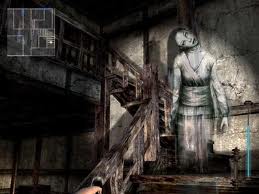
The Himuro Mansion (or Himikyru Mansion) is a japanese urban legend
about the dark history of a haunted house and the horrible murders of
an entire family who lived there. They say that the video game Fatal
Frame was based on a true story. Eager to solve the mystery, many people
have scoured maps, trying to find the real location of Himuro Mansion.
According to the legend, the Himuro Mansion is a large, traditional
Japanese house that is located in a rocky area somewhere on the
outskirts of Tokyo. The mansion became famous for being the site of the
worst mass murder in the history of Japan.
Terrible rituals were performed deep in Himuro Mansion, such as
the Strangling Ritual, the Demon Tag Ritual, and the Blinding Ritual.
The Strangling Ritual and Blinding Ritual were performed in a hidden
room, not shown on the house's original plans. This room is connected to
the house by a long lattice corridor that starts at the Rubble Room.
These rituals were part of the Himuro family's duty to keep the Hell
Gate sealed. The family was able to do this for many years until Kirie's
ritual failed and caused The Calamity, killing most of the occupants of
the mansion and unleashing the Malice, cursing the mansion and all who
die within it. The Himuro Family Master then killed all those in the
house who survived The Calamity before taking his own life.
A
folklorist named Ryozo Munakata moved in with his family to study the
mansion, but he and his family disappeared, killed by the mansion's
curse. Years later, Junsei Takamine and his research team went to
investagte the masion for Takamine's newest work and disappeard, leading
Mafuyu Hinasaki to the masion in search of them, where he too
disappeared. His younger sister, Miku Hinasaki, then arrives at the
mansion and breaks the mansion's curse to rescure her brother.
The Himuro family were said to have practiced ancient and
forgotten Shinto rituals that had long ago been outlawed in Japan. One
of these occult rituals was called “The Strangling Ritual” and involved
the sacrificial murder of a young girl. The purpose of this
gruesome ritual was to protect the Himuro family from bad karma which
they believed would emerge from a portal in the mansion’s courtyard.
Himuro Mansion Haunting - Urban Legend of Haunted House & Horrible Murders
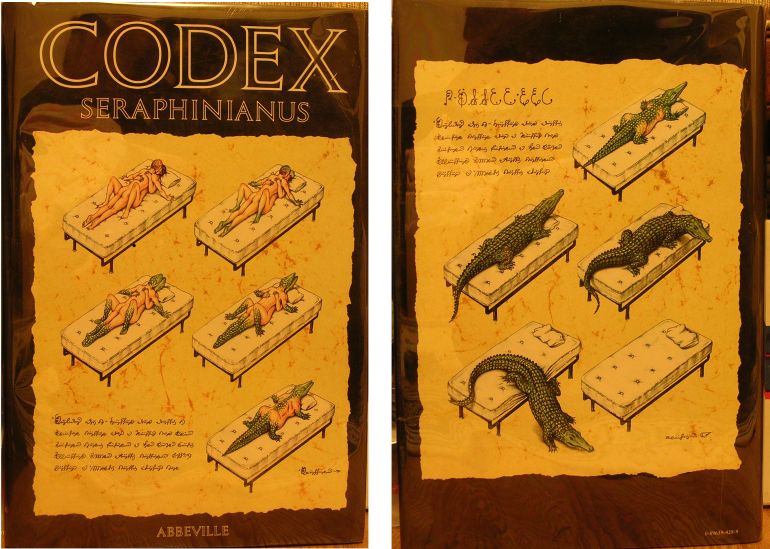
Some
people think it's one of the weirdest books ever published. An art book
unlike any other art book. A unique and disturbing surreal parody.
Grotesque and beautiful. It's very hard to describe. Codex Seraphinianus
by Italian artist Luigi Serafini is a window on a bizarre fantasy world
complete with its own unique (unreadable) alphabet and numerous
illustrations that borrow from the modern age but veer into the
extremely unusual.
Codex Seraphinianus, originally published in 1981, is an illustrated
encyclopedia of an imaginary world, created by the Italian artist,
architect and industrial designer Luigi Serafini during thirty months,
from 1976 to 1978. The book is approximately 360 pages long (depending
on edition), and written in a strange, generally unintelligible
alphabet. Originally published in Italy, the book has since been
released in a number of different countries.
The word "Codex" in the title means "book" or "code" (from Latin
caudex), and "Seraphinianus" is derived from the author's last name,
Serafini (which in Italian, refers to the seraphs). Literally, Codex
Seraphinianus means Serafini's code. It was first published in two
volumes by Franco Maria Ricci in 1981. The pictures in this AbeBooks
article are from the 1983 American edition published by Abbeville - 370
pages of the Twilight Zone. There is also a 1993 single volume edition
and a revised 2006 Italian edition with new illustrations - this final
edition is the most affordable version.
Created in the late 1970s, the book's blurb on the cover flap talks
about Codex Seraphinianus being a book for the "age of information"
where coding and de-coding messages is increasingly important in
genetics, computer science and literary criticism. "The Codex presents
the creative vision of this time..." goes on the blurb. If Serafini was
so influenced by "information" in the 1970s to create this maverick art
book, then what must he make of today's information age? Codex
Seraphinianus Covers featuring Facebook, Twitter, blogs and Google?
Countless websites and blogs can be found pondering the meaning of Codex
Seraphinianus or simply admiring a truly original piece of
art/fantasy/imagination - call it what you will.
Codex Seraphinianus - The World's Weirdest Book

Born
into a wealthy family with Hungarian origins from Bucharest, Romania,
the family relocated to the town of Berkerekul (former Yugoslavia) when
Renczi was ten. By the age of fifteen, she had become increasingly
unmanageable by her parents and had frequently run away from home with
numerous boyfriends, many of whom were significantly older than herself.
Early childhood friends described Renczi as having an almost
pathological desire for constant male companionship and possessing a
highly jealous and suspicious nature. Although Vera Renczi was a
stunningly beautiful woman (according to the standards of the time, I
guess), she was also one of the most prolific female serial killers in
history, driven by a pathological need for devotion from men.
Renczi's first marriage was to a wealthy Bucharest businessman many
years her senior and she bore him a son named Lorenzo. Left at home
daily while her older husband worked, she began to suspect that her
husband was being unfaithful. One evening, in a jealous rage, Renczi
tinctured the man's dinner wine with arsenic and began to tell family,
friends, and neighbors that he had abandoned her and their son. After
approximately a year of "mourning", she then declared that she had heard
word of her supposedly estranged husband's death in a car accident
Shortly after hearing the news of her first husband's "automobile
accident" Renczi again remarried, this time to a man nearer her own age.
However, the relationship was a tumultuous one and Renczi was again
plagued by the suspicion that her new husband was involved in
extramarital affairs. After only months of marriage the man vanished and
Renczi then told friends and family that the man had abandoned her.
After a year had passed, she then claimed to have received a letter from
her husband proclaiming his intentions of leaving her forever. This
would be her last marriage.
Vera Renczi – The Black Widow Serial Killer Who Killed All Of Her Lovers

The most extraordinary and credible research into the ghost phenomenon ever documented is the so-called "Ghosts of Flight 401."
On December of 1972, an Eastern Airlines Tri-Star jetliner, Flight 401,
crashed into a Florida swamp. The pilot, Bob Loft (on the left), and
flight engineer Don Repo (on the right), were two of the 101 people who
perished in the air crash. Not long after the crash, the ghosts of Loft
and Repo were seen on more than twenty occasions by crew members on
other Eastern Tri-Stars, especially those planes which had been fitted
with parts salvaged from the Flight 401 wreckage. The apparitions of
Loft and Repo were invariably described as being extremely lifelike.
They were not only reported by people who had known Loft and Repo, but
their ghosts were also subsequently identified from photographs by
people who had not known Loft and Repo.
The strange tales of the ghostly airmen of Flight of 401
circulated in the airline community. An account of the paranormal
happenings even appeared in a 1974 US Flight Safety Foundation's
newsletter. John G. Fuller, the best-selling author of The Ghost of Flight 401,
carried out an exhaustive investigation into the hauntings with the aid
of several cautious airline personnel. A mass of compelling testimony
was produced as a result. The website Flight 401 – The Black Box Story
provides an account of the crash as told using material from the Black
Box. It highlights how poor cockpit resource management caused a tiny
light bulb to distract the pilots and bring down a Tristar jetliner.
The cause of the crash was found to be a couple of minor design faults
in the controls, and Lockheed rapidly corrected them. However, it was
after some of the undamaged parts of the aircraft were subsequently
recycled onto other planes that the mysterious incidents began to be
reported. Although Eastern Airlines refuses to discuss the matter,
researchers have interviewed numerous individuals claiming to have
encountered the ill-fated pair on L-1011s. As the reports would have it,
Loft and Repo have devoted their after-lives to watching over the
passengers and crew of these Lockheed passenger planes.
Many of the testimonies are extremely persuasive. Many come from people
in highly responsible positions: pilots, flight officers, even a vice
president of Eastern Airlines, who allegedly spoke with a captain he
assumed was in charge of the flight, before recognizing him as the late
Loft.
Ghosts of Flight 401 - The official airline of the paranormal

The
Great Train Robbery is the name given to a £2.6 million train robbery
(the equivalent of £41 million today) committed on 8 August 1963 at
Bridego Railway Bridge, Ledburn near Mentmore in Buckinghamshire,
England. The bulk of the stolen money was not recovered. Three robbers
were never found, two convicted robbers escaped. One convicted was most
likely never involved, and died in prison. Though there were no firearms
involved, the standard judgment was 30 years.
Planning the robbery
The robbery was planned by several parties with no overall mastermind.
Although the robbery operation itself was planned and executed by the
late Bruce Reynolds, the target and the information came from a still
unknown individual dubbed the "Ulsterman". The key field organisers were
Gordon Goody, Buster Edwards and Charlie Wilson, with Brian Field being
the key link between the robbers and the informant.
At 6:50 PM on Wednesday 7 August 1963 the travelling post office (TPO)
"Up Special" train set off from Glasgow Central Station, Scotland en
route to Euston Station in London. The train was hauled by an English
Electric Type 4 (later Class 40) diesel-electric locomotive numbered at
the time as D326 (later renumbered 40 126). The train consisted of 12
carriages and carried 72 Post Office staff who sorted mail during the
journey.
Mail was loaded onto the train at Glasgow and also during station stops
en route, as well as from line-side collection points where local post
office staff would hang mail sacks on elevated track-side hooks which
were caught by nets deployed by the on-board staff. Sorted mail on the
train could also be dropped off at the same time. This process of
exchange allowed mail to be distributed locally without delaying the
train with unnecessary station stops. One of the carriages involved in
the robbery is preserved at the Severn Valley Railway.
The second carriage behind the engine was known as the HVP (High Value
Packages) coach, which carried large quantities of money, as well as
registered mail for sorting. Usually the value of the shipment was in
the region of £300,000, but because there had been a Bank Holiday
weekend in Scotland, the total on the day of the robbery was £2.6
million (equivalent to about £43 million in 2012 RPI terms).
The Great Train Robbery - Unsolved Mystery
Please Don't Touch - Unless You Want a Baby!
More than 2,000 women have reported that they became pregnant shortly after touching the wooden fertility statues.
Many of them had been told by doctors they would never be able to
conceive. Some are very serious about touching the statues, believing in
their powers to help them conceive. Others want to avoid touching the fertlity statues
- for the very same reason! The five-foot tall wooden statues were
acquired from the Ivory Coast of West Africa in 1993 and were placed in
the lobby of Ripley Entertainment's corporate headquarters in Orlando.
Within months, 13 women, including staffers and office visitors were
pregnant.
A Little History
The five foot tall wooden statues were acquired from the Baule people of
the Ivory Coast of West Africa and within a year of going on display at
Ripley Entertainment’s head office in Orlando, Florida, 13 office staff
and visitors became pregnant.
The
idea of fertility statues appear in a variety of cultures. Fertility
statues serve both as a tribute to whatever fertility gods that the
locals believe in, as well as often a mystical totem which helps the
women of a given tribe to conceive and bear healthy children. These
fertility statues may resemble people, or they can look like some
particular animal that is associated with fertility in that culture.
Archaeological digs have turned up a variety of these sorts of statues,
from the Norse goddess Freya riding a boar to the statue of a fat woman
found in the ruins of the Tarxien temples on the island of Malta.
The Legend of the African Fertility Statues
 |
|
According to legend, Pope Joan was a woman who concealed her gender and
ruled as pope for two years, from 853-855 ad. Her identity was exposed
when, riding one day from St. Peter's to the Lateran, she stopped by the
side of the road and, to the astonishment of everyone, gave birth to a
child.
Pope Joan was a legendary female Pope who allegedly reigned for a few
years some time during the Middle Ages. The story first appeared in
13th-century chronicles, and was subsequently spread and embellished
throughout Europe. It was widely believed for centuries, though modern
religious scholars consider it fictitious, perhaps deriving from
historicized folklore regarding Roman monuments or from anti-papal
satire.
The first mention of the female pope appears in the chronicle of Jean de
Mailly, but the most popular and influential version was that
interpolated into Martin of Troppau's Chronicon Pontificum et
Imperatorum, later in the 13th century. Most versions of her story
describe her as a talented and learned woman who disguises herself as a
man, often at the behest of a lover. In the most common accounts, due to
her abilities, she rises through the church hierarchy, eventually being
elected pope. However, while riding on horseback, she gives birth, thus
exposing her gender. In most versions, she dies shortly after, either
being killed by an angry mob or from natural causes. Her memory is then
shunned by her successors.
Mysterious Woman Pope Who Just Won't Go Away

Lurking in the dark waters
of Long Island Sound is a mysterious place known as Plum Island. Just
ten miles off the coast of Connecticut, this tiny speck of land has long
been rumored to be the epicenter of top-secret biowarfare research. The
U.S. government acknowledges that the island is home to a scientific facility. Its stated purpose is to study animal-borne diseases.
But investigators are beginning to uncover startling new facts about
this forbidding place. Insiders and ex-employees have come forward to
tell their stories. From security breaches in germ labs, to escaped diseases and potential mass epidemics, this is the real Plum Island story. But the government denies anything is wrong.
Plum Island's Secret Past
Although the origins of Plum Island are shrouded in secrecy,
investigations have revealed the startling fact that, in the 1950s, the
lab was run by a German scientist named Erich Traub, who was brought to
America after the Second World War. His specialty in the Third Reich was
virus and vaccine research.
Along with rocket scientists like Werner von Braun, Traub was spirited
out of post-war Germany to help jump-start the Cold War against the
Soviet Union. The well-documented U.S. government project to recruit German scientists and technicians was known as Operation Paperclip. President Truman approved the project, so long as only nominal Nazi party members without SS affiliation were recruited. However, because the Nazi party
promoted so many of its top scientists, Operation Paperclip ended up
white-washing the pasts of many of its recruits in order to get them
into the U.S.
Traub's particular expertise was in disease-carrying insects—in
particular, the common tick. Ticks are often carried aloft by birds, and
can therefore quickly spread
over large swaths of territory. Called "vectors," ticks and mosquitoes
are also genetically similar. Both contain bacteriophages or plasmids
that transfer genetic material into a cell, or from one bacterium to
another. In other words, they can infect whatever host animal with which
they come in contact. Multiply this by millions, and ticks become the
perfect insect army.
The Government's Secret Lab 257 - The Horrific Secrets of Plum Island

The
Lost Dutchman Gold Mine (also known by many similar names) is,
according to legend, a very rich gold mine hidden in the southwestern
United States. The location is generally believed to be in the
Superstition Mountains, near Apache Junction, east of Phoenix, Arizona.
There are also theories that the mine lies a considerable distance
beyond the Superstition Mountains, in Mexico. There have been many
opinions about how to find it, and each year people search for it. Some
have died on the search.
The mine is named for German immigrant Jacob Waltz, who purportedly
discovered it in the 19th century and kept its location a secret.
("Dutchman" was a common, though inaccurate, American slang term for
"German," derived from the German word for "German" – "Deutsch").
The Superstition Mountains to the east of Phoenix, AZ reportedly hold a
legendary motherlode of gold known as the Lost Dutchman Gold Mine. Truth
and fiction about this mine have been unrevokably mixed up through the
years, producing 62 varieties of the legend. But before we get into
those, here are some genuine facts about the Lost Dutchman Gold Mine:
There really was a Lost Dutchman, although he wasn’t Dutch. Jakob
Waltz was nicknamed Dutch (i.e. from the Netherlands) because he was
Deutsch (i.e. from Germany; a common error, see also ‘Pennsylvania
Dutch’). A man of that name was born in Württemberg in 1810 and
emigrated to the US. From the 1860s onward, he homesteaded in Arizona,
pursuing mining and prospecting as a hobby – a quite unsuccessful one.
Waltz fell ill and died in 1891, but not before revealing the location
of an alleged gold mine to Julia Thomas, the neighbour who cared for
him. As early as Sept 1, 1892, a local newspaper relates how Thomas and
others were trying to locate the mine. When they failed, it is reported
they sold copies of a map for $7 each. After about a decade, the story
sank into obscurity, regaining notoriety when it had acquired more
spectacular aspects, in a fashion not dissimular to a game of Chinese
whispers.
The Lost Dutchman Gold Mine

In Brazil during the 1950's worldwide "UFO Flap" comes a report of one of the most bizarre accounts on record—the seduction of Antonio Villas Boas.
At the time of his alleged abduction, Antônio Vilas-Boas was a
23-year-old Brazilian farmer who was working at night to avoid the hot
temperatures of the day. On October 16, 1957, he was ploughing fields
near São Francisco de Sales when he saw what he described as a "red
star" in the night sky. According to his story, this "star" approached
his position, growing in size until it became recognizable as a roughly
circular or egg-shaped aerial craft, with a red light at its front and a
rotating cupola on top. The craft began descending to land in the
field, extending three "legs" as it did so. At that point, Boas decided
to run from the scene.
According to Boas, he first attempted to leave the scene on his tractor,
but when its lights and engine died after traveling only a short
distance, he decided to continue on foot. However, he was seized by a
1.5 m (five-foot) tall humanoid, who was wearing grey coveralls and a
helmet. Its eyes were small and blue, and instead of speech it made
noises like barks or yelps. Three similar beings then joined the first
in subduing Boas, and they dragged him inside their craft. Antonio
Villas Boas is located in Brazil
Once inside the craft, Boas said that he was stripped of his clothes and
covered from head-to-toe with a strange gel. He was then led into a
large semicircular room, through a doorway that had strange red symbols
written over it. (Boas claimed that he was able to memorize these
symbols and later reproduced them for investigators.) In this room the
beings took samples of Boas' blood from his chin. After this he was then
taken to a third room and left alone for around half an hour. During
this time, some kind of gas was pumped into the room, which made Boas
become violently ill.
Shortly after this, Boas claimed that he was joined in the room by
another humanoid. This one, however, was female, very attractive, and
naked. She was the same height as the other beings he had encountered,
with a small, pointed chin and large, blue catlike eyes. The hair on her
head was long and white (somewhat like platinum blonde) but her underarm and pubic hair were bright red. Boas said he was strongly attracted to the woman,
and the two had sexual intercourse. During this act, Boas noted that
the female did not kiss him but instead nipped him on the chin.
Famous Alien Abduction of Antonio Villas Boas: Alien Female Seduction

The
Victorio Peak Treasure is one of the most famous treasures in the
United States, second only perhaps to the Lost Dutchman Mine. In
November 1937, a deer hunter and former medicine showman known as Doc
Noss went searching for fresh water near the peak and discovered the
hidden entrance to a tunnel. An old ladder lead into a maze of tunnels
around a large cavern containing an old chest inscribed with the words
"Sealed Silver" in Old English.
Doc Noss was born in Oklahoma and traveled all over the Southwest
seeking excitement. In 1933, he married Ova "Babe” Beckworth and the two
settled down in Hot Springs, New Mexico, which later changed its name
to Truth or Consequences. In November 1937, Doc, Babe, and four others
left on a deer hunt into the Hembrillo Basin. Setting up camp on the
desert floor at the base of Victoria Peak, the men headed into the
wilderness, while their wives stayed at camp. Hunting by himself, Doc
scouted the base of the mountain. When it began to rain, Doc sought
shelter under a rocky overhang near the summit of the mountain. While
waiting for the rain to subside he noticed a stone that looked as if it
had been "worked” in some fashion. Reaching down, he was unable to budge
it, but after digging around the rock, he got his hands under it.
Lifting the rock, he found a hole that lead straight down into the
mountain.
November 1937, Doc, Babe, and four others left on a deer hunt into the
Hembrillo Basin. Setting up camp on the desert floor at the base of
Victorio Peak, the men headed into the wilderness, while their wives
stayed at camp. Hunting by himself, Doc scouted the base of the
mountain. When it began to rain, Doc sought shelter under a rocky
overhang near the summit of the mountain. While waiting for the rain to
subside he noticed a stone that looked as if it had been “worked” in
some fashion. Reaching down, he was unable to budge it, but after
digging around the rock, he got his hands under it. Lifting the rock,
he found a hole that lead straight down into the mountain.
Peering into the darkness, Doc saw an old man-made shaft with a thick,
wooden pole attached at one side. Doc thought that he had discovered an
old abandoned mineshaft. When the rain finally stopped, Doc returned to
camp, telling Babe of the discovery. The two decided to keep the
discovery between themselves and return to the inspect the shaft later.
The Search for Gold at Victorio Peak
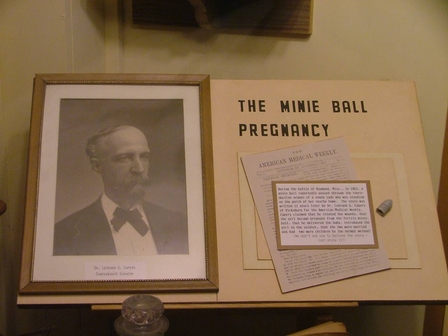
In
November 1874 an unusual article appeared in the introductory volume of
The American Medical Weekly, a Louisville medical journal. It was
written by Dr. LeGrand G. Capers and was titled, "Attention
Gynaecologists!—Notes from the Diary of a Field and Hospital Surgeon,
C.S.A." In the article Dr. Capers recounted an unusual case of
artificial insemination he had witnessed on a Civil War battlefield in
Mississippi, in which a bullet had passed through a soldier's testicles,
and then traveled on before hitting a woman and impregnating
her. The event was said to have occurred on May 12, 1863 at around 3
p.m. at the "battle of R." (battle of Raymond), where "Gen. G's brigade"
(Brigadier General John Gregg) of the Confederate forces fought Grant's
army led by "Gen. L." (Major General John A. Logan).
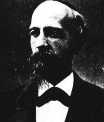
In 1874, The American Medical Weekly ran an article by a Dr. LeGrand
Capers (that's him in the picture) who claimed he witnessed this very
thing on a Civil War battlefield. Apparently there was a house very
close to the Confederate lines, and a bullet (a "minnie ball") hit a
soldier, "carrying away the left testicle", and then continued
its course toward the house. One of the daughters in the house had also
been hit by a stray bullet, which was lost in the abdominal cavity
somewhere.
Because the doctor was stationed with the army nearby, he continued to
check on the wounded girl over the next several months. Around the
six-month mark, he discovered that the girl was pregnant. Around the nine-month mark, she gave birth to a nine-pound baby boy.
The family was beyond embarrassed that their unmarried daughter was apparently having "indiscretions",
but the girl swore that she was a virgin. The doctor examined her and
said it was true - she had never had sex. Meanwhile, the little boy was
very sick and he had some incredible swelling in the groin area. The
doctor decided to operate, and when he did, he pulled out a minnie ball.
He put two and two together and figured out that the bullet must have picked up some semen
went it ripped through the soldier's testicle, and managed to
impregnate the girl when it lodged inside of her stomach. Supposedly,
the girl and the soldier ended up getting married and having two more
kids.
The problem? The doctor had invented the whole story in order to mock
the ridiculous stories that were coming out of the battlefield. But it
was taken as fact, and was even reprinted in 1959 in the New York State
Journal of Medicine.
Son of a gun : Case of the Miraculous Bullet

The
vanishing hitchhiker (the ghostly hitchhiker, the disappearing
hitchhiker, the phantom hitchhiker or the hitchhiker) story is an urban
legend in which people traveling by vehicle meet with or are accompanied
by a hitchhiker who subsequently vanishes without explanation, often
from a moving vehicle. Vanishing hitchhikers have been reported for
centuries and the story is found across the world, with many variants.
The popularity and endurance of the legend has helped it spread into
contemporary popular culture.
ONE OF THE most persistent and entertaining types of ghost stories is
that of the phantom or vanishing hitchhiker. It's also one of the most
chilling because, if true,it brings ghosts in very close contact with
mortals. More disconcerting still, the stories depict the specters as
looking, acting, and sounding like living people - even physically
interacting with the unsuspecting drivers who pick them up.
The archetypal modern vanishing hitchhiker is a figure seen in the
headlights of a car traveling by night with a single occupant. The
figure adopts the stance of a hitchhiker. The motorist stops and offers
the figure a lift. The journey proceeds, sometimes in total silence, and
at some subsequent point, the passenger appears to vanish while the
vehicle is in motion. In many cases, the hitchhiker vanishes when a
(normally red) vehicle reaches the hitchhiker's destination. The basic
story usually goes something like this: a weary driver traveling at
night picks up a strange hitchhiker, drops him or her off at some
destination, then somehow later finds out that the hitchhiker had in
fact died months or years earlier - often on that very same date. Like
many "true" ghost stories, tales of phantom hitchhikers are difficult to
verify, and are most often relegated to the category of urban legend or
folklore. But there are many such stories, and it's up to you whether
or not you believe any of them. Here are a few:
Red-Headed Hitchhiker of Route 44
There's a classic urban legend called the Phantom Hitchhiker, which goes something like this.
One night, a man's driving down a dark country road when he notices a
young lady hitchhiking by the side of the road. She's pretty, with long
blonde hair, and she's wearing a blue dress. The man thinks, "She looks
safe. Why not pick her up?" The young lady gets in the passenger seat
and says "There's a big white farm house about a mile down the road.
Could you drop me off there?"
Phantom Hitchhikers : The Vanishing hitchhiker Ghost Stories




